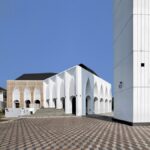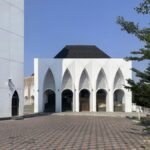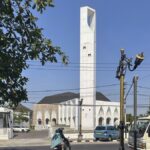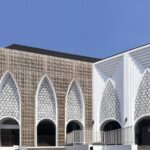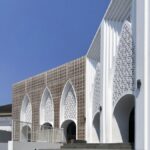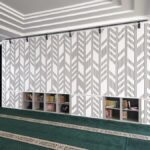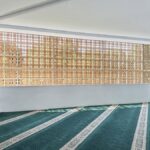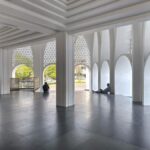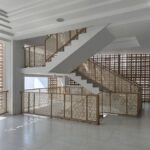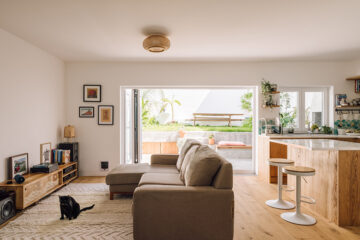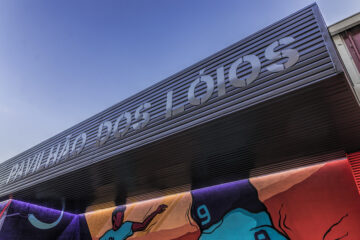Reimagining Tradition: Al-Muttaqin Grand Mosque by Andyrahman Architect

The Al-Muttaqin Grand Mosque Cakranegara, founded in 1973, underwent significant transformations following devastating earthquakes in Lombok. The original mosque, burdened by a heavy oncrete dome, succumbed to the tremors, necessitating a fresh architectural vision. In 2019, construction began on a new mosque, guided by Andyrahman Architect’s responsive approach to nature, community needs, and Islamic tradition.
Fusion of Heritage and Modernity
The design of Al-Muttaqin Mosque draws inspiration from the rich tapestry of Indonesian heritage, seamlessly blending tradition with contemporary aesthetics. The roof, a synthesis of the iconic tajug roof of Bayan Beleq mosque and the distinctive Sasak rice barn roof, not only pays homage to religious and cultural roots but also prioritizes safety with its lightweight construction—a crucial consideration in earthquake-prone regions.

Symbolism in Form
The mosque’s architectural elements are imbued with profound symbolism. The distinctive tapered openings, reminiscent of traditional Sasak granaries, evoke a sense of harmony and balance, echoing architectural motifs found in distant lands like India and Persia. These openings, both upward and downward-facing, symbolize the intersection of spiritual elevation and earthly existence, encapsulating Islam’s holistic worldview.
Embracing Local Craftsmanship
Andyrahman Architect’s meticulous attention to detail extends to the incorporation of traditional Lombok-style wickerwork and weaving motifs into the mosque’s ornamentation. While modern materials like synthetic rattan ensure durability, the design remains rooted in local craftsmanship, fostering a sense of belonging and community identity.

Spatial Harmony and Social Cohesion
The mosque’s spatial layout reflects a thoughtful consideration of communal needs and environmental sustainability. Positioned closer to the west side to accommodate a larger courtyard, the mosque anticipates overflow during peak times, ensuring optimal worship experiences without encroaching on external spaces. Natural ventilation is maximized, eschewing air conditioning in public areas, fostering a connection with nature and reducing energy consumption.
A Nexus of Community Engagement
Beyond its spiritual function, Al-Muttaqin Grand Mosque serves as a vibrant social hub, drawing young people to its open spaces and terrace. Unlike traditional domed mosques, its inclusive design fosters accessibility and social cohesion, bridging the gap between architecture and community. By embracing change and adaptability, the mosque transcends its role as a mere edifice, evolving into a dynamic public space that unites and enriches the surrounding community.
The Al-Muttaqin Grand Mosque stands as a testament to the transformative power of architecture, where tradition and innovation converge to create spaces that resonate deeply with both the human spirit and the natural world.

